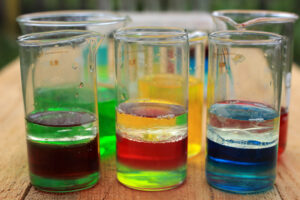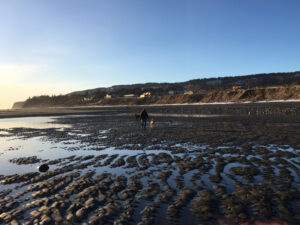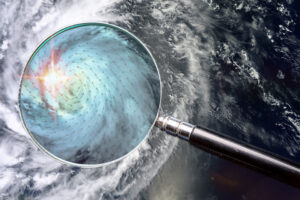Grade 7 - Ocean in Motion
SUMMARY
An 8-9 Week Unit for Middle School Level
This unit is designed for seventh grade, but can be adapted to other middle school grades. The unit is introduced with a true story of rubber bath toys that were lost overboard in the Pacific Ocean and found on beaches around the world. Students investigate physical patterns in the oceans as they progress through a series of investigations to learn about weather and ocean circulation patterns, waves and tides, temperature and salinity in relation to currents, and the effects of ocean floor topography on currents. They then choose a culminating activity to examine the effects of ocean movement in real-life or theoretical situations.
Essential Questions
- What are the patterns of physical changes in aquatic environments?
- How do they affect us?
- What are the major weather and ocean circulation systems in Alaska?
Enduring Understandings
- Physical changes in the aquatic environment occur on a daily, seasonal, and long-term basis.
- Weather systems and ocean systems have major influences on one another and the dynamics of matter and energy.
- Science and technology can be used to detect and solve problems.
Ocean Literacy Principle Addressed
- The earth has one big ocean with many features.
- The ocean is a major influence on weather and climate.
LESSON PLANS

Density
In this 7-9 day investigation, students are engaged in a variety of hands-on demonstrations and experiments that will help them to understand thermohaline circulation in the ocean. They begin with an introductory activity that helps them to review or arrive at a definition of density, then go on to demonstrate the effects of temperature and salinity on density and design their own experiment to simulate ocean mixing. They experiment further with hot and cold water as they consider the effects of tropical and polar climates on ocean currents, and end by writing conclusions to summarize their learning.
View Lesson Plan
Location: Classroom
Activity Type: Hands-On, Multimedia

Waves in the Water
In this 7-10 day investigation, students develop an understanding of waves and tides and their motion through discussion, demonstration, and hands-on investigation. They demonstrate wave motion in containers, and create marigrams to show local tide data and to compare tide patterns from different parts of the world. They use their knowledge to consider whether waves or tides could account for the movement of the bath toys to their final locations.
View Lesson Plan
Weather and Circulation Systems
In this 5-day investigation, students develop an understanding that the large ocean circulations affecting Alaska mimic major weather patterns. They begin by creating and observing wave and riffle patterns and motions of objects in a tub. They plot possible current patterns on their map and organize meteorological data to determine how well wind patterns match their predictions.
View Lesson Plan
Where Did the Rubber Bath Toys Go?
This is an introductory investigation to be done in one class period. Students read a true story about bath toys that fell off a container ship and washed up on beaches around the world. Using a world map, they identify, locate, and record the dates and places where the toys were found. Finally, they write a hypothesis about how the rubber toys made their way to the various locations identified.
View Lesson PlanAUTHORS
Cally Leader, Anchorage School District
Steve Bay, Anchorage School District
Scott McKim, Anchorage School District
Roger Price, Fairbanks North Star Borough School District
Stephanie Hoag, Curriculum Consultant, Juneau
Marla Brownlee, Alaska Sea Grant
Marilyn Sigman, Center for Alaskan Coastal Studies
